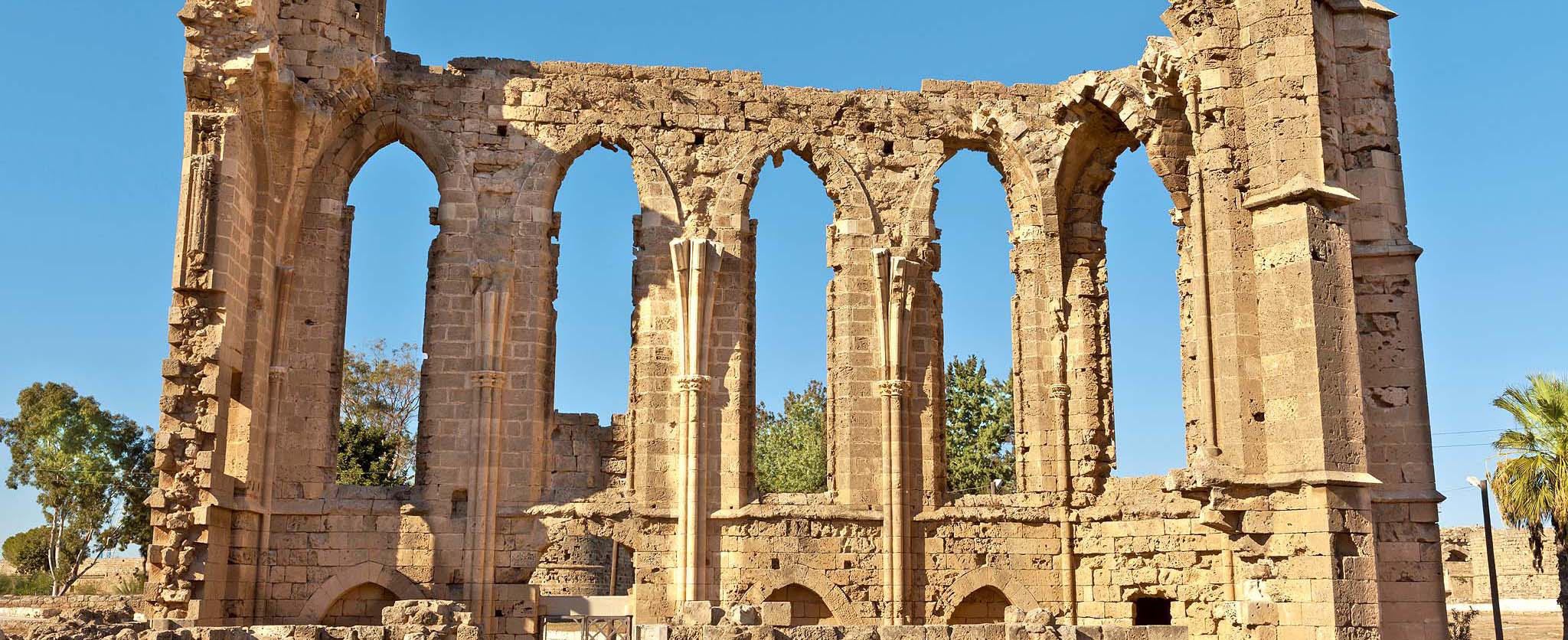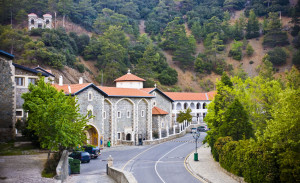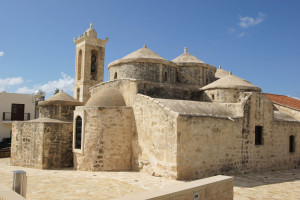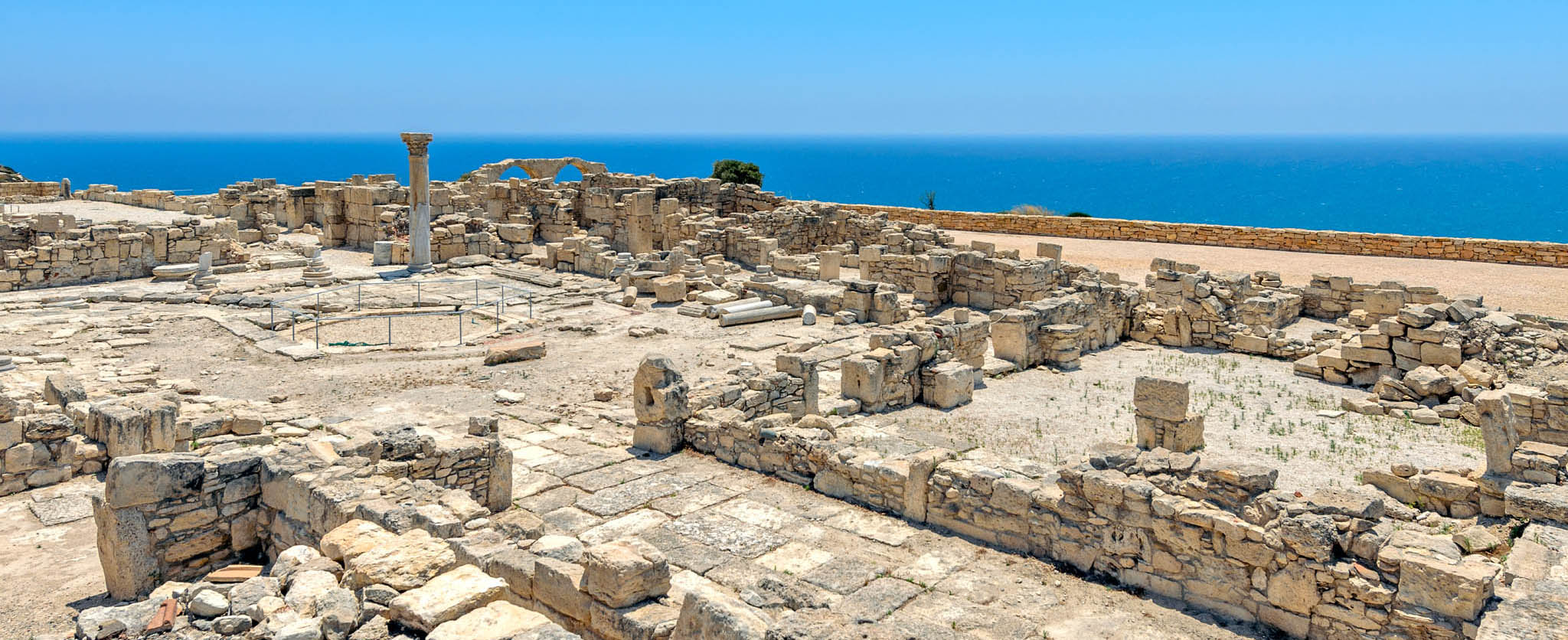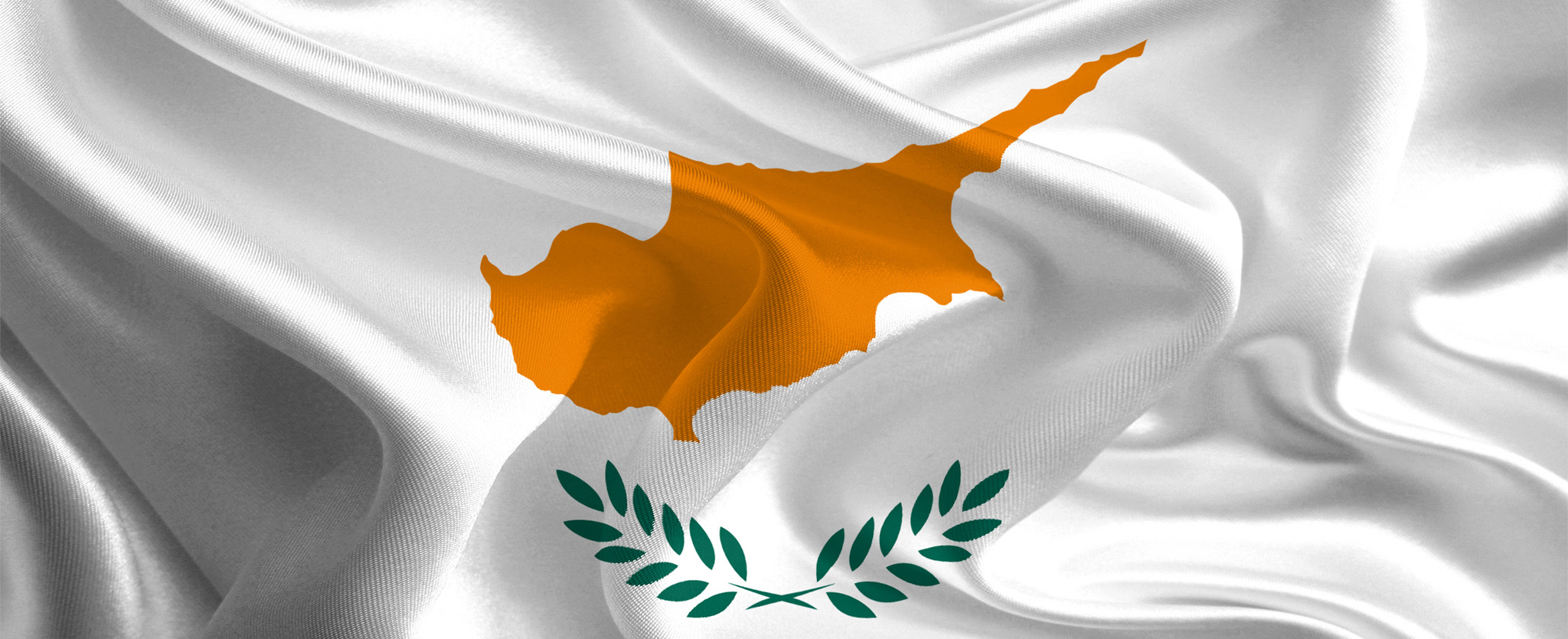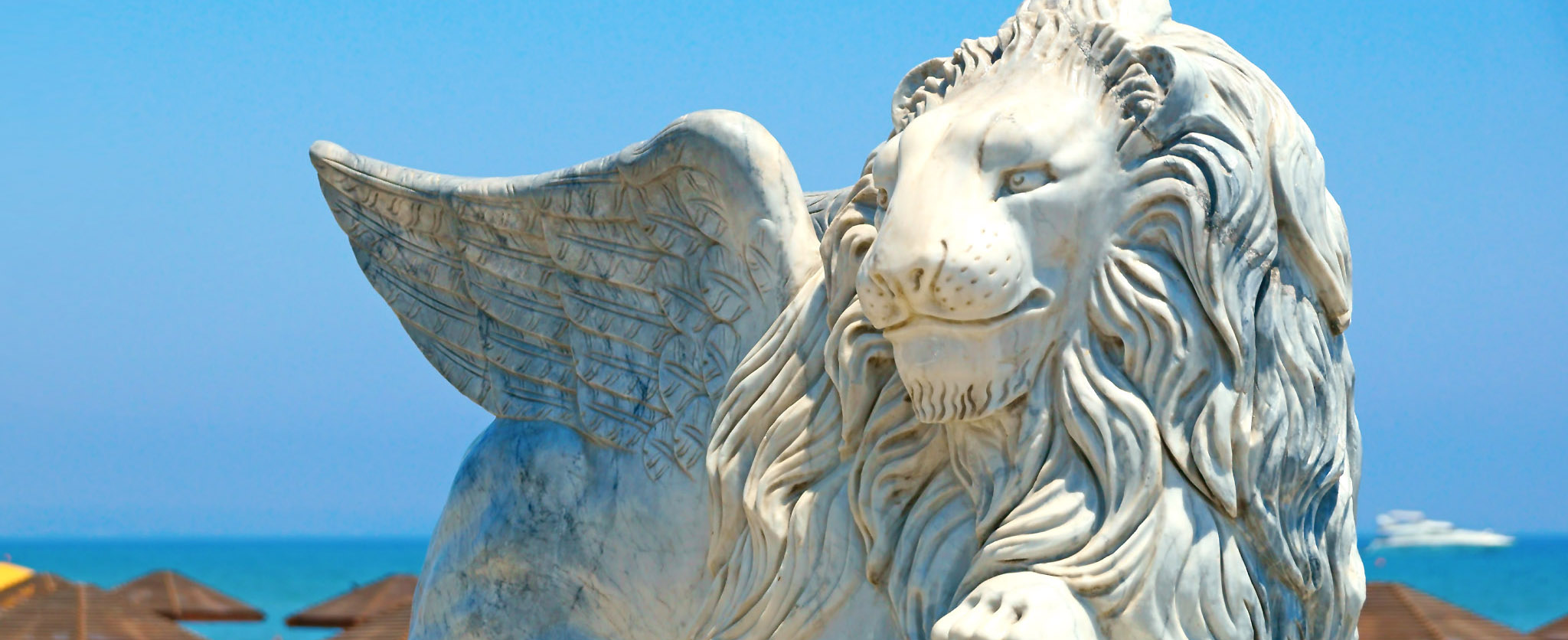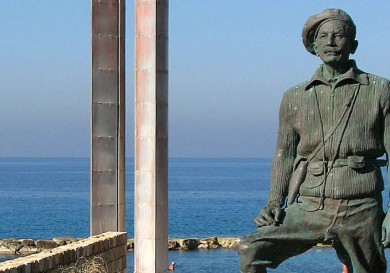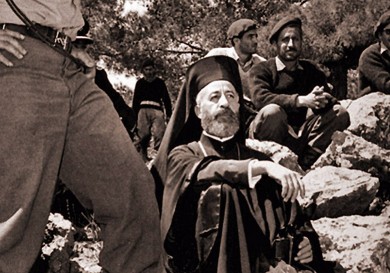After the Roman Empire was divided into East and West, the Byzantine period in the history of Cyprus begins (330-1191 AD). During this period, Cyprus became part of the Eastern Roman Empire – Byzantium. A new earthquake, which occurred in the IV century AC, destroyed the main cities of the island. Devastated, they were rebuilt and became the island’s capital, the city of Constantine, located near Salamis. During the IV-V centuries the largest royal churches were built here.
The era of royal churches
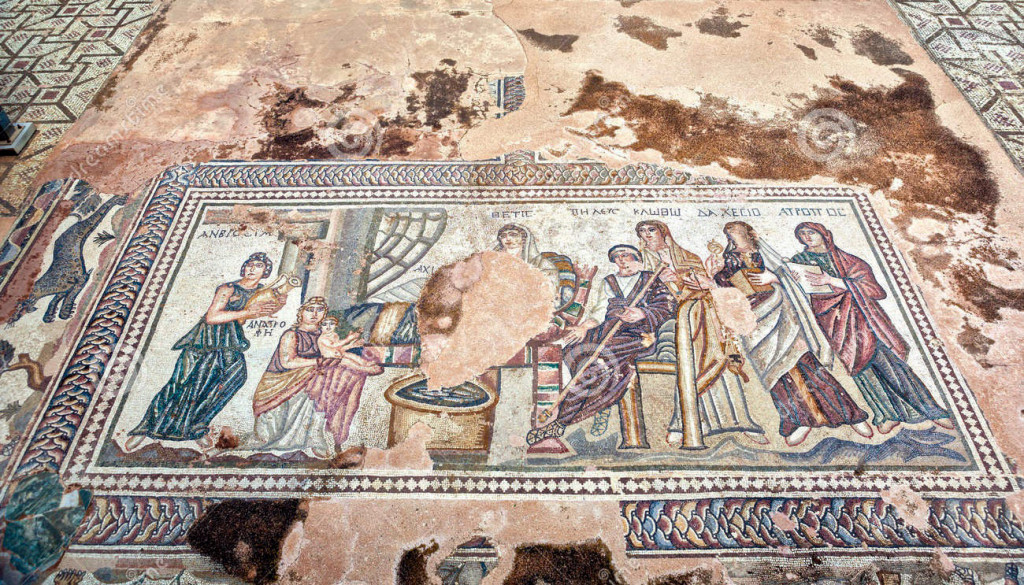 In 488 AC after the tomb of St. Barnabas was discovered at Salamis, as well as the handwritten Gospel of Matthew, the Emperor Zenon granted complete freedom and autonomy to the Church of Cyprus. The Archbishop was vested with imperial rights: instead of a rod, he held a scepter, wore the red robe of the emperor and signed documents in red ink.
In 488 AC after the tomb of St. Barnabas was discovered at Salamis, as well as the handwritten Gospel of Matthew, the Emperor Zenon granted complete freedom and autonomy to the Church of Cyprus. The Archbishop was vested with imperial rights: instead of a rod, he held a scepter, wore the red robe of the emperor and signed documents in red ink.
In this era many old Christian royal churches were built, mainly with three and five naves, the ruins of which are found throughout Cyprus. Among them the three-aisled royal church of the Holy Trinity in Yalyusa, St. Barnabas, the Virgin in Kanakaria, St. Heracleides in Tamassus, St. George in Pegia and rthe five-naval – St. Constantine and Epiphany in the Holy Resurrection in Kato Paphos, are worth special attention.
From these times, a sufficient number of mosaics has remained. These paintings are unique for their artistic touch and performance, and for their figurative content. Throughout the Byzantine Empire a very small amount of mosaic works of this era has remained due to their complete destruction that followed in the years of the Inquisition.
The flourishing of monarchy and the Crusades
In 647 AD the Arabs, who were led by Moab, made their first raid into Cyprus. For more than three hundred years the Arabs and pirates had been ravaging Cyprus, and in 965 AD, the Emperor Phocas finally relieved Cyprus, expelling the invaders from the territory. After the expulsion of the Arabs, the island again became part of the Byzantine Empire, and Nicosia was proclaimed the capital of Cyprus.
The ruling dynasty Comneni were particularly interested in strengthening and protecting the island. After Asia Minor was occupied by Muslims, Cyprus had become one of the fortified points of the Byzantine Empire. At this time, on the Pentadaktilos mountain, the St. Hilarion, Vufavento and Kandara castles were built, for the protection and defense of the island. In addition, numerous monasteries were created, such as the Virgin of Kykkos, St. John Chrysostom’s Monastery in Machairas, Saint Neophytos, St. Nicholas Pokrovsky, Virgin Araki, Asinos and others.
The emergence of many new monasteries proves the flourishing monarchy on the island and shows the strong religious feeling of its inhabitants. Among the believers the most revered was the Mother of God, and the majority of monasteries was devoted to her.
 In 1191, King Richard the Lionheart of England took part in the Third Crusade. One of the ships, in which Berengaria of Navarre and the sister of the king were sailing upon among other guests, crashed not far from Limassol.
In 1191, King Richard the Lionheart of England took part in the Third Crusade. One of the ships, in which Berengaria of Navarre and the sister of the king were sailing upon among other guests, crashed not far from Limassol.
The Byzantine governor of Cyprus Isaac Comnenus, who declared himself emperor of the island, refused to help the wrecked ship. This behavior infuriated the king of England, and gave him an excuse to invade the island. The marriage of Richard the Lionheart with Berengaria took place in Limassol and she was proclaimed Queen of England. Some time later, Richard sold Cyprus to the Templar Knights for 100,000 dinars.
The French dynasty
After the uprising, the residents of Cyprus were sold to to the French (Frank) de Kyu Luzianu, King of the Kingdom of Jerusalem. Thus, for Cyprus begins a new period – the period of the Frankish oppression.
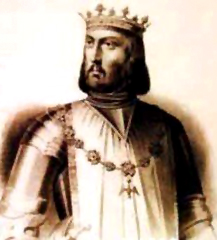 Kyu Frank de Luzinianu founded the feudal system in Cyprus. He divided the island into fiefs and placed them into the hands of the European aristocracy. The local residents had become slaves. The official Catholic Church believed that with the support of the Greek authorities, the orthodox faith would alter.
Kyu Frank de Luzinianu founded the feudal system in Cyprus. He divided the island into fiefs and placed them into the hands of the European aristocracy. The local residents had become slaves. The official Catholic Church believed that with the support of the Greek authorities, the orthodox faith would alter.
But despite the pressure, the people and the Church of Cyprus remain faithful to the Orthodox teaching. Granting special rights to foreign merchants in Venice and Genoa helped Famagusta to become one of the most important ports in the Mediterranean. Nicosia continued to be the capital of the island, where the residence of the French kings was. The reign of the French dynasty ended in 1489, when the last queen of Cyprus, Caterina Cornaro, placed the kingdom under the rule of Venice, in exchange for eternal rents.
Remarkable examples of Gothic church architecture are the Cathedral of St. Sophia in Nicosia, St. Nicholas in Famagusta and Bellapais Abbey built near Kyrenia. At the same time the Franks updated, expanded and strengthened the garrisons and bastions. Such examples are the castles of St. Hilarion, Vufavento and Kantara. In the cities, defensive walls were built, towers were fortified (in Nicosia, Famagusta, Kyrenia), and the castle of Kolossi near Limassol was built.
Read the following article
In 1489, a new period in the history of Cyprus started: the rule of the Venetians, the Turkish oppression, the rule of the British and liberation of the Republic. This period of history is in our next story.




